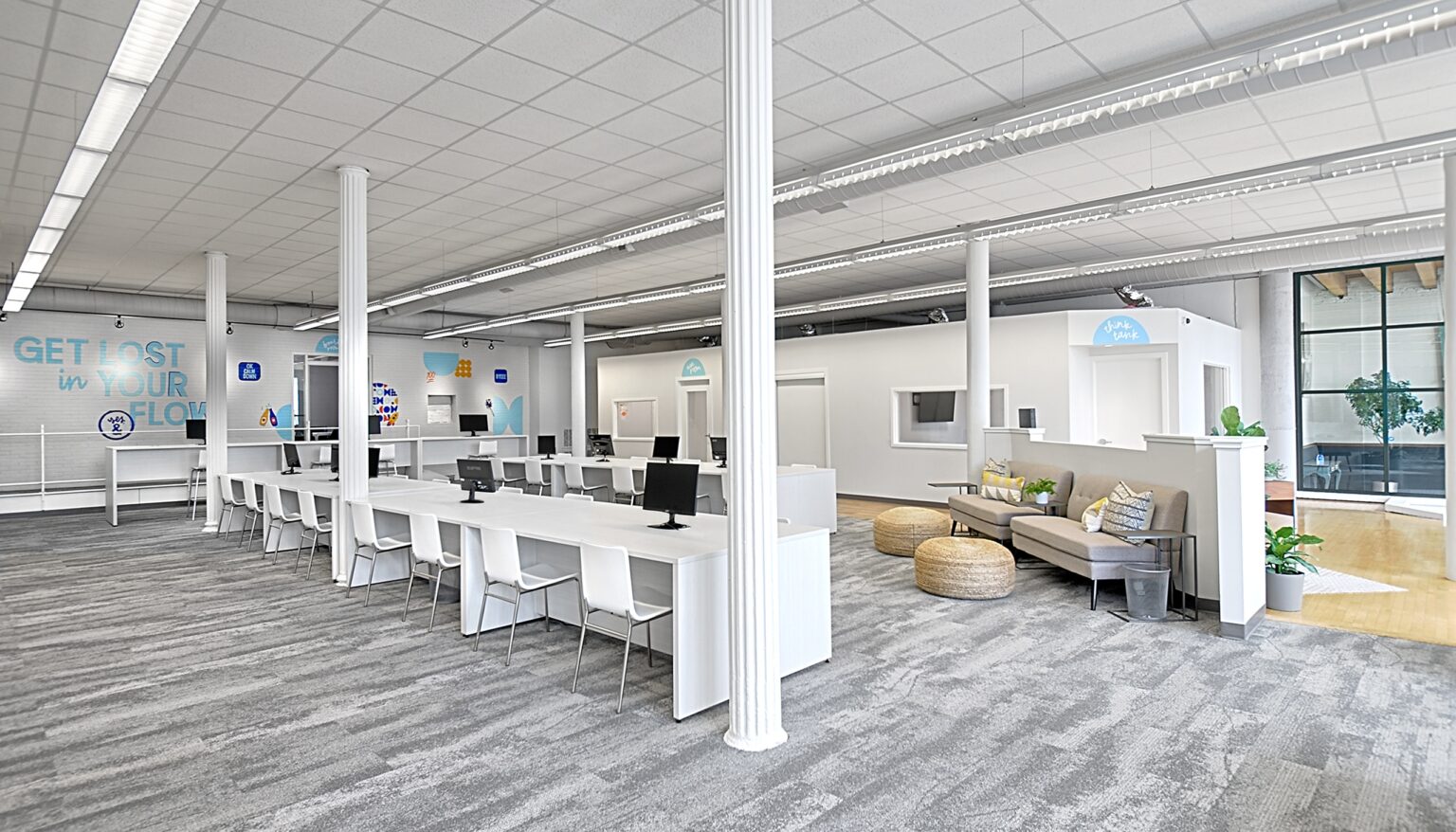
Shared workspaces are becoming more and more common as companies, entrepreneurs, consultants, freelancers and others continue to search for flexible working options that are not only affordable and convenient, but also spur creativity, productivity, and a sense of fraternity. Here’s what you need to know about designing a shared workspace that attracts tenants and maximizes your business’s capital, both human and financial:
What is a Shared Workspace?
A shared workspace is an office where people (both self-employed and/or employed by others) share working space, such as desks or rooms, supplies and equipment. In addition to offering these types of physical amenities, shared workspaces also provide the opportunity for workers from a wide variety of industries and with many different types of interests and areas of expertise to collaborate and socialize. Research indicates it is this intangible sense of community (rather than the space itself) that provides the most value for those in shared workspace environments, with the “(1) connections, (2) solutions, (3) energy/ motivation and (4) social support” available in the shared workspace increasing employees’ chances for success and improving their respective businesses’ bottom lines.
What You Need In Order to Design an Effective Shared Workspace
The perfect shared workspace isn’t created accidentally. You need to put a lot of thought into your workspace design if you want to get the most out of it. At Key Interiors, we’ve spent much time considering the critical features of these types of spaces and believe the best designs highlight:
Accessibility
The key to establishing a highly marketable shared workspace is making it accessible to the widest range of people. As well as being centrally located in a region or city, with easy access to public transportation, really effective workspaces are spacious, with accommodations for people with all types of abilities and needs.
Appealing Aesthetics
Of course, appealing decor helps to attract tenants and works to set your space apart from the competition. Working with an experienced design team can help you accentuate your rooms and spaces with the colors, architectural elements and other design trends most likely to render the most profitable results.
An Attention to Wellness
Today’s workers expect (and deserve) a workplace that is safe, clean and calming. But because shared workspaces necessarily experience a lot of traffic, it can be hard to effectively address wellness without a good amount of forethought. Choosing certain design features for your shared workspace — like wide expanses of non-porous counters, durable, hard surface floors, and touch-free technologies — can help you keep germs at bay since they are easy to clean and sanitize. Similarly, choosing furniture and fixtures (like moveable walls and dividers) that are flexible allows your workspace to be configured in multiple ways depending on the occupancy needs at any given time, making the overall space a lot more comfortable for those using it. Other design elements that particularly cater to employee health and wellness — natural lighting; fresh (or at least well-ventilated) air; noise control measures; and access to the outside — can also be easily incorporated with a little planning.
Adequate Areas
Finally, all well-appointed shared workspaces maintain the appropriate amount of space needed to meet, move and mingle. The goal of a shared workplace isn’t to cram as many people into one spot as possible; it’s to accommodate the most people comfortably. A shared workspace doesn’t just provide a spot for everyone to sit, but a place for them to have a private meeting; to talk on the phone; to sit and socialize; to use equipment; and/or to possibly share a meal. It allows them to walk about freely without having to rub elbows with officemates or stand in a long line to make use of amenities. Taking the time to thoughtfully plan out how every inch of a shared workspace could and should be used ensures that everyone gets what they need without sacrificing convenience or comfort!
Want to Learn More?
Designing a shared workspace that is both efficient and profitable is really just a matter of intention. With calculated thought, you can plan a space with the design features that give tenants the tools they need to be productive so that they come and stay in your space! Please contact our design team at Key Interiors to learn more about designing a shared workspace that works for you, as well as your tenants.